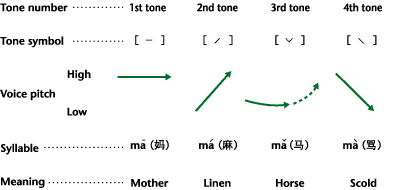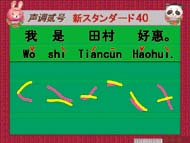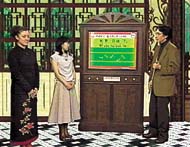|
Chinese Pronunciation Training System "Seicho Nigo"
-Educational TV: "Chinese Conversation"-
 Toru
TAKAGI, Toru
TAKAGI,
Associate Director, Human Science
The conventional language learning process has mainly relied on a student
listening to a teacher's voice, or to a recorded voice, to pronounce
the sound in imitation of what he or she has heard. However, scientific
analysis involving comparison of the model's pronunciation with the
student's pronunciation is expected to enhance the effectiveness of
current learning methods. For this purpose, STRL has developed "Seicho
Nigo," a software program for learning the Chinese language. Accent
and intonation in Chinese is expressed by the speaker raising and lowering
the pitch of his or her utterance. Each Chinese character represents
a syllable having a certain intonation. Chinese has four basic forms
of accent, with each having a different meaning. Conventional programs
describe the accent and intonation of the model voice only in the form
of an arrow, as shown in Figure 1. "Seicho Nigo" uses overlapping curves
representing the model's utterances and the student's, thereby visually
assisting the learning process. It was first used on the NHK educational
TV program "Chinese Conversation," and has since gained favorable comments.
 |
|
Figure 1: Four tones of Chinese
|
|

 Toru
TAKAGI,
Toru
TAKAGI, 

